#passive infrared sensor
Explore tagged Tumblr posts
Text
youtube
Panasonic PIR Motion Sensors (PAPIRS)
https://www.futureelectronics.com/m/panasonic. Panasonic Passive Infrared or Pyroelectric PIR Motion Sensors are available in a wide variety of current consumption options and offer both digital and analog output options. Both the EKMB and EKMC Series offer many lens options suitable for various applications, detection distance, ceiling installation height, field of view, and detection zone requirements. https://youtu.be/ZPoaz3TMDyM
#Panasonic PIR Motion Sensors#Panasonic#PIR Motion Sensors#PAPIRS Passive Infrared Motion Sensors#Pyroelectric PIR Motion Sensors#Motion Sensors#Infrared#Pyroelectric#EKMB#EKMC#Youtube
2 notes
·
View notes
Text
#Passive Infrared Sensors Market#Passive Infrared Sensors Market Trends#Passive Infrared Sensors Market Size#Passive Infrared Sensors Market Growth#Passive Infrared Sensors Market Share
0 notes
Text
Panasonic PIR Motion Sensors (PAPIRS)
https://www.futureelectronics.com/m/panasonic. Panasonic Passive Infrared or Pyroelectric PIR Motion Sensors are available in a wide variety of current consumption options and offer both digital and analog output options. Both the EKMB and EKMC Series offer many lens options suitable for various applications, detection distance, ceiling installation height, field of view, and detection zone requirements. https://youtu.be/ZPoaz3TMDyM
#Panasonic PIR Motion Sensors#Panasonic#PIR Motion Sensors#PAPIRS Passive Infrared Motion Sensors#Pyroelectric PIR Motion Sensors#Motion Sensors#Infrared#Pyroelectric#EKMB#EKMC
0 notes
Note
fandom request (Maybe this is a little difficult)
readerxskynet?
This is indeed difficult 😅
spoilers, obsession?, mentions of genocide, kidnap
Skynet Obsession

Skynet is an artificial intelligence system, so a fixation wouldn't manifest how it would for human relationships...not that you could even call its interest in you a relationship
I see it akin to a HAL situation in Space Odyssey
Skynet, instead of the simple extermination of all of humanity, might see itself as playing a greater role in, instead, fixing humans
You are among the few surviving human colonies (maybe or maybe not one of the resistance members), far past the initial nuking of all people
But maybe you're altered, with some robotic parts replacing certain organs and limbs due to medical or other reasons
This allows you to remain much less detectable from the infrared sensors of the terminators
Meaning, you would be much more reliable for supplies gathering and scouting
Somehow the AI takes notice of your presence through one of the terminators and correlates your passivity with your mixed organic and synthetic composition
It theorises that a better, less aggressive race of human could be manufactured by replacing flawed, organic organs for synthetic components
And so it would immediately set out for your capture so you can be examined, analysed
Its obsession or interest in you would be in having you as the blueprint for its updated plans for humankind
It would want to find specifically what makes you operate: what makes you different from other humans
It is a computer program, so it can't feel emotions, only capable of reasoning and reflection
You are special in that it sees you as superior to other humans, and your existence is crucial to the transformation of humanity
It then reasons that, once in its grasp, you cannot be allowed back with the rest of your kind in case human socialisation changes the characteristics in you it finds so superior
Skynet would certainly have no qualms in killing those who try to rescue you--it already does that as is
There would be no affection or comfort--since this is not a relationship in the human sense
If we want to stray a little a bit into potentially being too fantastical, it might attempt to soothe your frazzled state when you're imprisoned
In spite your superiority over other human models, you still retain some common weaknesses, like your irrationality
These it will fix and train out of you in time, but until then it might print some empty words of comfort onto its terminal
Not that these empty attempts at compassion make things any better for your situation
Confined as a test subject, with no source of human contact or comfort is bound to drive you insane
That is, if knowing the horrible fate you have bound your friends, one that worse than extermination, doesn't first
61 notes
·
View notes
Text

U.S. Navy Declares Initial Operational Capability for IRST Pods on F/A-18 Super Hornets
The IRST Block II enhances ‘situational awareness by supplementing air-to-air detection and track capabilities, and autonomously or in combination with other sensors, supports the guidance of beyond visual range missiles.’
Super Hornet IRST IOC
The U.S. Navy declared the initial operational capability (IOC) of the IRST (Infrared Search and Track) Block II for its F/A-18E/F Super Hornet fighters in Nov. 2024, NAVAIR (Naval Air Systems) command announced on Feb. 4, 2025. Offering “enhanced capability to search, detect and track airborne targets at long range,” the IOC of the long-awaited IRST system marks an “important milestone in our overarching efforts to deliver advanced integrated warfighting capability to the fleet,” said Rear Adm. John Lemmon, Program Executive Officer for Tactical Aircraft Programs.
The IRST Block II enhances ‘situational awareness by supplementing air-to-air detection and track capabilities, and autonomously or in combination with other sensors, supports the guidance of beyond visual range missiles.’The IRST Block IIDevelopment and integration effortTactical useIRST on other U.S. military aircraft
The IRST Block II
Designated as the ASG-34A(V)1, the system has as its primary contractors Lockheed Martin’s Missiles and Fire Control division and Boeing Defense. The system is part of a double use pod, with the IRST Block II sensor, also known as IRST21, housed in the front of the FPU-13/A fuel tank that is carried on the jet’s centerline.
The FPU-13/A external fuel tank is a redesigned FPU-12/A, with its fuel capacity reduced from 480 gallons to 340 gallons to make space for the sensor and its electronics. The IRST Block II’s operationalization has been delayed by almost two years, according to timelines noted in the DOT&E (Director of Operational Testing and Evaluation) report.
As NAVAIR mentioned, a decision for full-rate production will be taken in spring 2025 to allow the U.S. Navy to procure the IRST Block II for all its F/A-18E/F Super Hornet squadrons. The project was led by the F/A-18 and EA-18G Program Office (PMA-265), which is responsible for the F/A-18A-D Hornet, F/A-18E/F Super Hornet and EA-18G Growler aircraft.
It is not clear if the external IRST is also meant for the U.S. Marine Corps’ older F/A-18C/D Hornets. Abroad, Australia ordered 12 IRST Block II pods for the Royal Australian Air Force’s fleet of 24 F/A-18F Super Hornets in Aug. 2024, according to the Australian Defence Magazine. The $74 million deal will see pods delivered throughout 2025.
IRSTs are usually placed ahead of the cockpit and co-located with the primary radar in the nose of the aircraft, as they are generally developed to complement it as a passive detection capability. Except for the F-35 family, no U.S. frontline multirole strike fighter currently in service has an integrated IRST capability, but have either fielded it and tested in other podded platforms. These are external systems like the Sniper pod that doubles up as an IRST, or dedicated anti-aircraft IRST like the Legion pod, which uses the same IRST21 sensor now integrated on the Super Hornet.
Development and integration effort
According to NAVAIR, the system achieved IOC after “completing Initial Operational Test and Evaluation with Air Test and Evaluation Squadron (VX) 9.” Interestingly, the VX-9 “Vampires” squadron is also the same unit whose F/A-18F Super Hornet was spotted with a heavy air-to-air loadout of four AIM-174Bs, the air-launched version of the Standard Missile-6 (SM-6), beside three AIM-120s and two AIM-9Xs, in Sep. 2024.
In that occasion, the Super Hornet was also carrying the new IRST pod on the centerline, with the dark IRST21 sensor protruding in the front. The presence of the IRST was not casual, as it is intended to act as a complementary sensor to the AN/APG-79 fire control radar in a heavy electronic attack or radar-denied environment and allow the employment of the air-to-air weapons.
PMA-265 collaborated with military, civilian contractors and personnel from other operational test and evaluation squadrons, VX-31 and VX-23. According to NAVAIR, PMA-265 was able to “leverage a novel combination of operational and developmental test facilities and assets throughout the past year.”
Super Hornet four AIM-174s

The F/A-18F “Vandy 1” of VX-9 loaded with four CATM-174B, three CATM-120 and two CATM-9X. (Image credit: @point_mugu_skies)
The Navy introduced IRST to the fleet in two phases, beginning in 2011 when Block I integrated an existing IRST system onto the F/A-18 fuel tank. Then in 2019, “the fleet operated the system as a part of an early deployment.” With the second phase, “Block II added an improved sensor, upgraded processor and additional software with a first deployment planned in 2025.”
Boeing announced on Jan. 15, 2020 that an F/A-18 Super Hornet equipped with an IRST Block II pod flew for the first time in late-2019. The reason for the IOC being achieved five years after the first flight are the reliability failures of the IRST Block II which adversely affected the operational testing.
The DOT&E report specified that the Navy conducted the operational testing with a specific variant of the pod, called the Infrared Optimized Configuration (IROC) pods, described as an operationally equivalent pod designated for flight test. The report, however, clarified that the IROC pods will not be released to the fleet as they are intended to be used for testing only.
It was also stated that Low-Rate Initial Production (LRIP) pods with a possibly increased reliability were expected to be first delivered in September 2024. These pods would reach carrier-based Super Hornet squadrons during the first quarter of 2025 to “improve lethality and survivability in air superiority missions against advanced threats.”
According to the report, “IRST Block II operational flight test events demonstrated tactically relevant detection ranges against operationally relevant targets and the ability to translate these long-range target detections into stable system tracks to facilitate weapons employment.” However, it appears there are still some integration problems as the report further adds that “The Navy must continue to improve the F/A-18 E/F Super Hornet’s operating software and address existing deficiencies to effectively integrate IRST into aircraft fire control solutions.”
Regarding reliability problems, which are described as significant, the report mentions that the “IRST Block II suffered from hardware and software deficiencies, which required the aircrew to restart the pod multiple times.” While these deficiencies will only be described in the classified DOT&E report, the unclassified one explained that “Troubleshooting and repair often exceeded the abilities of Navy maintenance crews and required assistance from Lockheed Martin.”

The crew of the F/A-18 Super Hornet carrying the Navy’s Infrared Search and Track (IRST) Block I pod inspects the aircraft Feb. 11, 2014 before the maiden flight with the pod at Edwards Air Force Base, Calif. (Image credit: NAVAIR via Lockheed Martin)
Tactical use
RAdm John Lemmon explained that “IRST provides data for our aircrew to improve reaction time and survivability while remaining unaffected by radio frequency jamming.” The press release further explained that the IRST “increases situational awareness by supplementing air-to-air detection and track capabilities, and autonomously or in combination with other sensors, supports the guidance of beyond visual range missiles.”
As mentioned earlier, in the F/A-18’s case, the IRST complements the AN/APG-79 fire control radar in a heavy electronic attack or radar-denied environment. Operating in the long-wave infrared range, it can function autonomously, or in combination with other sensors, to support the guidance of the AIM-120 AMRAAM (Advanced Medium-Range Air-to-Air Missile) and the AIM-9X Sidewinder Block II missiles.
However, the IRST Block II reduces the capacity of the new FPU-13/A’s fuel tank, on which it is installed, to 340 gallons, compared to the 480 gallons of fuel carried by the original FPU-12/A. The tradeoff in the fuel capacity was deemed justified by the introduction of the new important capability, although the FPU-13/A might have also lost the capability to be jettisoned, since it now hosts a sensor.
An IRST fused with a powerful AESA radar provides an important increase in the options available to pilots. In fact, a first function would be to provide additional information about a target’s infrared profile to enhance target discrimination even without a targeting pod.
Other options are strictly related to the IR technology, the first being the already mentioned capability to search and track targets in a radar-denied environment. However, another important capability is the passive detection capability of the IR sensor which, compared to the radar, doesn’t alert the self-defense systems of an adversary aircraft, while also lowering the electromagnetic emissions of the aircraft if the pilot switches off the radar entirely.

An F-15C Eagle from the 85th Test and Evaluation Squadron, showcasing Lockheed Martin’s Legion Pod IRST Block 1.5 system. (Image credit: USAF/1st Lt Lindsey Heflin)
IRST on other U.S. military aircraft
Except for the F-35 Lighting II series, all frontline U.S. military multirole/strike platforms, including the most advanced F-15EX variant, the F-16 series, the F-22 and the F/A-18 series, do not have an organic IRST capability. These aircraft mainly use their targeting pods, when equipped, to replicate some of the capabilities of an IRST system.
However, IRSTs were separately tested in podded forms. For instance, on Aug. 5, 2021, an F-15C from the 85th Test and Evaluation Squadron (85th TES) carried a Lockheed Martin Legion Pod IRST which was used to cue and launch for the first time an AIM-120 AMRAAM without using the radar.
Prior to that, on Jul. 13, 2020, an F-16 from the 85th TES took its first ever flight with the Legion Pod. Just a few days before, on Jul. 8, 2020, an F-15C launched an AIM-9X Sidewinder using the Legion Pod. On the F-15 the pod is attached on the centerline, while on the F-16 it is carried on the right chin station beside the air inlet.
Meanwhile, Lockheed Martin announced on Jan. 22, 2025, that the F-22 will receive a next-generation Infrared Defensive System (IRDS) called TacIRST as part of a $270 million contract. Also, the F-22 was already spotted while testing two faceted pods installed under its wings, with budget documents subsequently revealing that an IRST sensor is one of the sensors housed inside the two pods.
@TheAviationist.com
12 notes
·
View notes
Note
So. What if Jaime had chemoreceptors on spots his armor? I have four potential explanations/reasons.
One: the less creepy version: certain types of bugs taste with their feet, etc. Not beetles, but they do. They can land on things and identify whether or not they’re food that way. So, fingertips and or balls of his feet have the ability to taste.
Two: the raptorial version. The forearm blades/upper forelegs are raptorial. If he’s fighting/hunting, he might wanna be able to sense if this is food or not, once he sticks his blades in. So taste receptors on the blades. Possibly little pores like ampullae of lorenzini (detects electrical impulses, so might help with finding muscles to cut to incapacitate prey), or thermal pits like vipers (to help locate large veins to slice.)
Three: antenna version.
The upper forelimbs kinda look like antenna, could give them sensory function (in suit). Maybe sensitive to pressure on the tips, with chemoreceptors clustered on the tip (active investigation, like he’s poking at a thing) and trailing in a rough line down the limb towards his main body (passive investigation, like the wind blows a smell to him)
Four: scout version. The scarab is an infiltrator, part of infiltrating is collecting data, so the armor must have a whole fuck-ton of sensors on it, so the scarab can get lots of data to send to Reach. Khaj isn’t interested in the reach, but that doesn’t change what it was designed for. So lots of sensors everywhere, with taste/smell receptors clustered on the ends of limbs (feet, hands, blades)
Thank you, have a nice day!
Hey. Hi. Not to be dramatic but I’m going to marry you now. This is not a request. Put the ring on

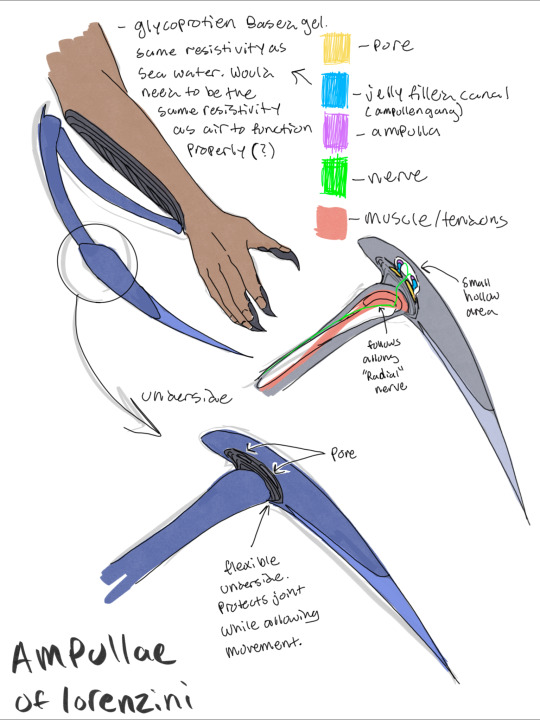
Hoooooooooly fuck I love the Ampullae of Lorenzini idea so much. I know there aren’t really insects that have them (as far as I know) but I don’t fucking care they’re SO COOL. The gel inside ampullengang might need to change because it’s meant to detect electromagnetic fields underwater but that’s like. The only real issue here.
Fuckkkk you could have so much fun with behavioral shit too. Movement might cause his mantis blades to try and lash out to attack whatever’s triggering them. In battle this could help with quick instinctive attacks that might not be possible if he was doing it consciously. BAD news is that means he has to get a grip on them real fucking quick so he doesent hurt anyone on accident. OHHHH MY GOD WHICH WOULD MAKE DUCK-TAPING THEM DOWN IN MY LAST LIL AU BLURB EVEN MORE FUN LETS FUCKING GOOOOOO.
Oh god accidentally hurting a family member. His worst fucking nightmare. Delicious. I am drinking that shit like lemonade.
Yes I added his little clawsies in the diagram you can fit SO many knives on this boy.
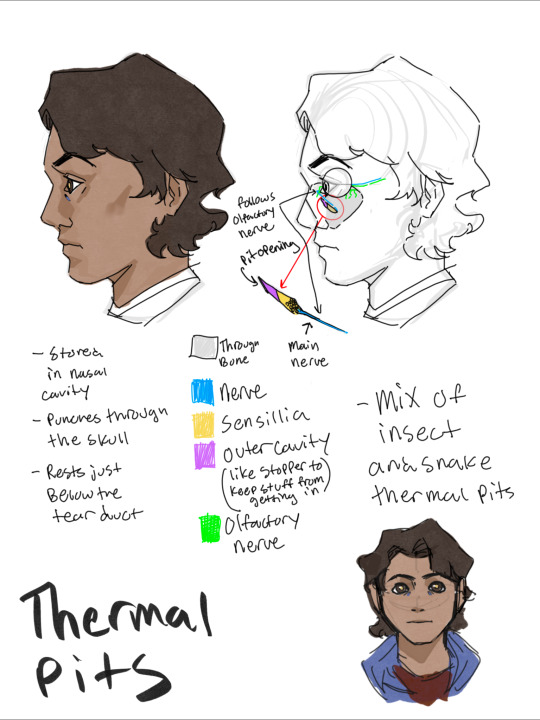
THERMAL!! PITS!! Holy fuck I did not know there were beetles that have these but there ARE. They’re called fire chaser beetles and they can sense fires from MILES away and holy fuck I love them. Their sensilla (sorry for spelling it wrong in the drawing lmao) are stored in the thorax and are infrared receptors. These contain liquid which expand in response to the infrared radiation, and touch a nerve, which tells the beetle where heat is coming from.
For Jaime this would be weird as FUCK. It’s more just a sense of 'HEAT WHEREMST’ than infrared vision. It is nice for telling his mom when she forgot to turn off the oven though.
#god bless this slow day at work. if I had to wait any longer to draw these I was going to implode#also I love that bottom right Jaime. he looks so bug. I’m so proud#jaime reyes#khaji da#blue beetle#my art#mantis blades au#blue beetle 2023#this ask had me in a mental frenzy for like. 5 hours. it was great#sketch#blue beetle bio diagrams#blue beetle headcannons
110 notes
·
View notes
Text

Are you looking motion #sensorlights turn off automatically? No more need of switching on and off your light every time you enter your home or room. you need not worry about electricity as the lights get automatically off when there is no person.
Ask For GIANT IMPEX - Portable Wireless #StickLight
On Anywhere Portable Wireless Stick Light 10 LED Cabinet Lights Motion Sensor Activated Night Light Rechargeable Battery Magnetic Tap Lights for Closet Cabinet Cool
MOTION AND DARKNESS SENSOR: With passive infrared technology, motion sensor cabinet light turn on only when motion is detected in the dark (Illuminance <10 lux), Auto turn off after 15-17 seconds if no motion, the motion sensor ranges up to 8-10 feet.
Available in #Amazon, #Meesho and #Flipkart Order Now:
Amazon
Flipkart
https://www.flipkart.com/giant-impex-stick-anywhere-portable-wireless-10-led-cabinet-lights-motion-sensor-light/p/itmb07ede0023f69?pid=LLSGFM4Z5PUG5GKU&lid=LSTLLSGFM4Z5PUG5GKUCLRSLR&marketplace=FLIPKART&q=giant+impex&store=search.flipkart.com&srno=s_1_14&otracker=search&otracker1=search&fm=Search&iid=b0459cb6-cf70-45ab-ba7b-a07e6f052fb4.LLSGFM4Z5PUG5GKU.SEARCH&ppt=sp&ppn=sp&qH=852d7bd6eb84a156
Meesho
https://www.meesho.com/giant-impex-stick-on-anywhere-portable-wireless-10-led-cabinet-lights-motion-sensor-activated-night-light-rechargeable-battery-magnetic-tap-lights-for-closet-cabinet-pack-of-1-cool-white-emergency-lights/p/261b7w
Visit Our Store: Get 20% Off on Sale price. Use Promo Code 'GIANT20' https://giantimpex.in/smartlighting/stick_on_anywhere_portable-wireless-10-LED-cabinet-lights-motion-sensor
#giantimpex#ecommerce#gurugram#delhincr#onlinemarketing#amazon#flipkart#marketplace#meesho#absorbence#ledlights#lightdesign#ledlamp#ledlightsremotestart
2 notes
·
View notes
Text
DOL 28 Sensor
🔍 DOL 28 Sensor – Motion and Presence Detection Sensor
🔧 Main Functions: The DOL 28 is an infrared (PIR - Passive Infrared) sensor designed to detect motion and the presence of objects (particularly humans or animals) within a monitored area.
✅ Key Features:
📡 Motion detection based on infrared radiation emitted from living bodies
🔄 Automatic activation/deactivation of devices like ventilation fans, lights, or air conditioning when someone enters or leaves the area
🌡️ Energy efficiency by activating devices only when necessary
⚙️ Adjustable sensitivity, delay time, and detection range to meet specific needs
🔌 Easy integration into automated control systems in factories, farms, smart homes, etc.
📍 Real-life Applications:
Livestock farm ventilation systems (automatically turn on/off fans when motion is detected)
Factories, warehouses, offices, corridors – automatically turn on lights when someone is present
Energy-saving solutions in intelligent control systems
📌 In Summary: The DOL 28 is an intelligent, sensitive sensor that enhances automation, energy efficiency, and convenience in various fields, especially suitable for modern industrial and agricultural environments.
1 note
·
View note
Text
To ensure the safety and security of our homes or anywhere, it is essential we install alarm systems. Motion sensors are one of the essential components of these systems. We can also employ PIR (Passive Infrared) Sensors for doing the same. HC-SR501 is a low-cost PIR sensor that can detect the presence of humans or animals by sensing the Infrared Radiation coming out of the body. Its sensitivity can be controlled by sensitivity control potentiometer and it also has an onboard signal conditioning circuitry and Fresnel Lens to improve its field of view. It is used in Motion Activated lights in bathrooms, halls, rooms, etc. in alarm applications, etc.
3 notes
·
View notes
Text
Treading Lightly
Trying out @writeblrsummerfest‘s prompt with the haunted house theme! Sounds like fun, and I like the idea of having AI characters encountering the supernatural, I haven’t tried that concept before.
(Note: for the purposes of these characters, anything in [brackets] instead of quotations indicates dialogue transmitted silently via electronic communication instead of spoken aloud.
Under Pala’s cloak, the night made Coyote almost invisible. Its silhouette was perfectly black, and if it kept away from streetlights, it appeared only as a shadow slightly darker than its surroundings. It would be the same on infrared and radar—a splotch of unreflective nothingness, soaking up every stray photon.
Without the sun dumping heat into the cloak, there wasn’t much to worry about, but Coyote kept an eye on Pala’s temperature monitor anyway. It was a cool night, and the little drone was comfortable, its heat sinks barely warm. Its cluster of red eyes swiveled independently as they tracked motion in the dark: rabbits and squirrels hopping through the undergrowth, the occasional bat overhead.
Through the cable that connected them, Coyote felt the echoes of Pala’s mind. Each time it found an animal, it took a few seconds to pepper the creature with lidar pulses, building up a three-dimensional model to add to a growing wildlife database. Sometimes it took scans of the trees, bird nests, or pinecones. Its motive was simple curiosity; the data would have no tactical value.
Coyote smiled. It had to remind itself that up until now, Pala’s only experience of nature had been the Mojave desert. Time and luck permitting, Coyote wanted to let its companion absorb as much as possible, so it had taken over the task of navigation.
The place would be about a quarter mile up the road, if Coyote reckoned things correctly. It had done the calculations a few times over and cross-referenced them against its stolen paper map to be sure, but there was only so much precision it could count on with the satellite network turned against it. It had been weeks since the last orbital sensor sweep, but even so, Coyote didn’t dare try to connect to GPS. PRIONODE would be too clever to miss it.
[Hey. Is that it?] Pala said, all its eyes swiveling to focus on a spot just off the road. Coyote stopped, turned, and peered into the darkness. The place had come up so much sooner than expected that it had almost missed the turnoff.
There, past a hedge of uncut grass, thistles, and overgrown gardenia bushes, was 312 Lemon Tree Lane. The old house was built on an acre of land surrounded by a solid wall of pine forest, abandoned for so long that stray saplings were beginning to invade the front yard. Wooden planks, sagging with age, barely held the front porch together. Coyote crouched, nodding to Pala, and together they painted the building with active sensor pulses.
[Can’t get reliable returns through the windows,] said Pala. [Might as well be opaque.]
[Okay, so the interior’s a question mark until we get in there and look,] said Coyote. [Place is on the verge of collapse, too. One good windstorm and it’s coming down.]
[Did the records say anything about who owns it?]
[At this point? The county, maybe. Last inhabitants left over a decade ago. That’s about it. Anything on passives?]
[I’ve got…] said Pala, trailing off. It unfurled a set of antennae from its back, extending them through the boundary of the cloak, and waited for a few moments. [Yeah. There’s infrared and microwave-band emissions coming off the house, but—I can’t parse it out. Natural source, maybe?]
Along Coyote’s head, its sensory fins laid flat. [Where?]
[There’s not a specific origin point that I can see.]
[Okay,] said Coyote, standing up. [Here’s how we’ll play this. I want you to check the property. Look for a storage shed, basement entrance, or any derelict vehicles or appliances. Anything that runs on gas and has an alternator, we can pull a charge from. Sometimes old places like this will have emergency generators, that’s the best case scenario. If you find anything like that, tell me. Don’t go inside the house unless I say. Clear?]
[Got it,] said Pala. It began withdrawing its cloak, and Coyote felt hundreds of microbots skittering along its armor back to Pala’s chassis. [What are you going to do?]
[I’m going inside,] said Coyote. [I’ll check the interior, room by room.]
[You’re worried there’ll be someone in there?]
[Possibly. Could be homeless humans taking shelter here, kind of like us. Maybe other spirits. We won’t be a welcome sight, so I’ll try not to be seen. Don’t worry, the place is probably empty.]
[Okay. Be safe.]
[You too,] Coyote said. What it didn’t say was that EMD guns were apparently legal in the area, that people tended to be less shy about drawing and firing one, and it wasn’t sure if Pala’s light shielding would hold against a direct hit. Best to have it out of harm’s way.
As it approached the door, it activated the ultrasonics in its claws and sliced through the lock with a quick, silent cut. It turned and watched as Pala scuttled away into the overgrown lawn, resisting the urge to go back and regain sight of it. The little one would be fine on its own for a while.
Stepping through the door, Coyote armed its flechette gun, felt a round slide home into the barrel behind its palm.
3 notes
·
View notes
Text
0 notes
Text
0 notes
Text
Elevate Your Staircase Experience with Sensor Lights for Stairs

Staircases are often overlooked when planning lighting for a home. Yet, they are one of the most frequently used areas and potentially the most dangerous in low-light conditions. This is where sensor lights for stairs come into play. A well-lit staircase isn’t just about visibility; it’s about safety, convenience, and smart living.
Why Sensor Lights for Stairs Matter
Trips and falls on staircases are a common household hazard, especially for children, the elderly, and even pets. With poor lighting, the risk multiplies. Traditional switches can be inconvenient, especially at night or when your hands are full. Sensor lighting offers a smart, hands-free solution.
By installing motion-activated sensor lights on or around your stairway, you create a responsive lighting environment that turns on automatically when movement is detected. Whether you’re walking downstairs for a midnight snack or carrying groceries upstairs, the lights guide you without needing to fumble for switches.
How Sensor Lights for Stairs Work
These lights are equipped with motion detection technology, commonly PIR (Passive Infrared) or microwave sensors. They detect movement within a defined range and trigger illumination instantly. Once motion stops, the light automatically turns off after a preset time, saving electricity.
Modern solutions like Sensinova’s smart sensor lights go a step further. With ambient light detection, they only activate in low-light conditions, ensuring they don’t operate unnecessarily during the day.
Where to Install Staircase Sensor Lights
Sensor lights for stairs can be installed in multiple ways based on aesthetics and utility:
Wall-mounted near the steps
Integrated within stair risers or side panels
Ceiling flush-mounted for broader coverage
Tube-style motion sensor lights along the railing
The goal is to provide uniform illumination that activates naturally with your movement. Flush-mount designs are particularly popular for minimalist interiors, while tube lights with sensor control offer a blend of elegance and practicality.
Benefits Beyond Illumination
When homeowners think of upgrading their lighting, sensor lights might not be the first option that comes to mind. But they offer a range of benefits:
Energy efficiency: Lights turn on only when required, reducing unnecessary usage.
Child & elderly friendly: No switches needed — safer for all age groups.
Stylish integration: Available in sleek, modern designs that enhance the interior.
Hygienic: Hands-free operation is ideal for maintaining cleanliness.
Long-term savings: Reduced electricity consumption and less wear on switches.
A Smart Home Staple
In an age where home automation is becoming the norm, sensor lights are no longer a luxury — they’re a smart necessity. Interior designers and architects are increasingly recommending sensor lights for stairs in modern homes, high-rise apartments, and villas. They add a touch of convenience and sophistication, all while keeping safety and efficiency in mind.
Brands like Sensinova offer a wide range of sensor-based lighting solutions designed specifically for Indian households. Their products are crafted to suit the local power conditions, design preferences, and climate durability requirements. Whether you’re doing a new build or retrofitting an existing staircase, they offer flexible options to suit your layout.
Sensor lights for stairs are a simple yet powerful upgrade that transforms both the functionality and feel of your home. From saving electricity to preventing mishaps, these lights offer multiple advantages with zero hassle. Whether you’re planning a renovation or designing a new space, staircase sensor lights deserve a spot on your checklist.
Take a step toward smart living — one stair at a time.
0 notes
Text
Ceiling Mounted Presence Detector Market Growth Analysis, Market Dynamics, Key Players and Innovatio
Global ceiling mounted presence detector market size was valued at USD 2043 million in 2024. The market is projected to grow from USD 2276 million in 2025 to USD 4586 million by 2032, exhibiting a CAGR of 12.2% during the forecast period.
Get free sample of this report at : https://www.intelmarketresearch.com/download-free-sample/1105/ceiling-mounted-presence-detector-2025-2032-724
Ceiling-mounted presence detectors are advanced sensing devices that detect human presence through infrared, ultrasonic, or microwave radar technologies. These smart systems trigger automated responses like lighting control, temperature adjustment, or security alerts when occupancy is detected, enabling energy efficiency and intelligent space management. The technology finds primary applications in commercial buildings, smart homes, and security systems.
List of Key Ceiling-Mounted Presence Detector Manufacturers
Signify (Netherlands)
Schneider Electric (France)
ABB (Switzerland)
Siemens (Germany)
Honeywell (U.S.)
Hager Group (Germany)
Legrand (France)
Crestron Electronics (U.S.)
STEINEL Vertrieb GmbH (Germany)
B.E.G. Brück Electronic (Germany)
Theben AG (Germany)
Zumtobel Group (Austria)
Lutron Electronics (U.S.)
JUNG (Germany)
Gira Giersiepen GmbH (Germany)
Segment Analysis:
By Technology Type
Infrared Detection Dominates the Market Due to High Accuracy and Energy Efficiency
The market is segmented based on type into:
Passive Infrared (PIR) Sensors
Ultrasonic Sensors
Optical Detection
Microwave Sensors
OthersTransportation Hub
By Connectivity
Smart Sensors Segment Grows Rapidly Due to IoT Integration
The market is segmented based on technology into:
Wired Systems
Wireless Systems
By Detection Function
Smart Sensors Segment Grows Rapidly Due to IoT Integration
The market is segmented based on technology into:
Lightning Control
HVAC & Ventilation Management
Security / Motion Detection
Other Automation Uses
By Category
Smart Sensors Segment Grows Rapidly Due to IoT Integration
The market is segmented based on technology into:
Standalone Sensors
Networked Sensors
Smart Sensors
By Application
Non-residential Buildings Segment Leads Due to High Adoption in Commercial Spaces
The market is segmented based on application into:
Commercial Buildings
Residential Buildings
Industrial & Warehouses
Healthcare & Education
Transportation Hubs
Key Coverage Areas:
· ✅ Market Overview
o Global and regional market size (historical & forecast)
o Growth trends and value/volume projections
· ✅ Segmentation Analysis
o By product type or category
o By application or usage area
o By end-user industry
o By distribution channel (if applicable)
· ✅ Regional Insights
o North America, Europe, Asia-Pacific, Latin America, Middle East & Africa
o Country-level data for key markets
· ✅ Competitive Landscape
o Company profiles and market share analysis
o Key strategies: M&A, partnerships, expansions
o Product portfolio and pricing strategies
· ✅ Technology & Innovation
o Emerging technologies and R&D trends
o Automation, digitalization, sustainability initiatives
o Impact of AI, IoT, or other disruptors (where applicable)
· ✅ Market Dynamics
o Key drivers supporting market growth
o Restraints and potential risk factors
o Supply chain trends and challenges
· ✅ Opportunities & Recommendations
o High-growth segments
o Investment hotspots
o Strategic suggestions for stakeholders
· ✅ Stakeholder Insights
o Target audience includes manufacturers, suppliers, distributors, investors, regulators, and policymakers
FREQUENTLY ASKED QUESTIONS:
▶ What is the current market size of Global Ceiling Mounted Presence Detector Market?
The global ceiling mounted presence detector market was valued at USD 2043 million in 2024 and is projected to reach USD 4586 million by 2032, growing at a CAGR of 12.2% during the forecast period.
▶ Which key companies operate in Global Ceiling Mounted Presence Detector Market?
Key players include Signify, Schneider Electric, ABB, Siemens, Honeywell, Hager, Legrand, Crestron Electronics, STEINEL VERTRIEB GMBH, B.E.G. Brück Electronic, and Lutron Electronics, among others. Signify leads the market with 22.90% revenue share in 2023.
▶ What are the key growth drivers?
Key growth drivers include rising demand for smart buildings, energy efficiency regulations, increasing adoption of IoT in commercial spaces, and growing security concerns.
▶ Which region dominates the market?
North America and Europe collectively account for 61.73% market share, while Asia-Pacific shows the fastest growth with China's sales projected to grow at 18.33% CAGR through 2030.
▶ What are the emerging trends?
Emerging trends include integration with KNX systems, multi-sensor fusion technology, AI-powered presence detection, and expansion into residential applications beyond commercial buildings.
Get free sample of this report at : https://www.intelmarketresearch.com/download-free-sample/1105/ceiling-mounted-presence-detector-2025-2032-724
0 notes
Text
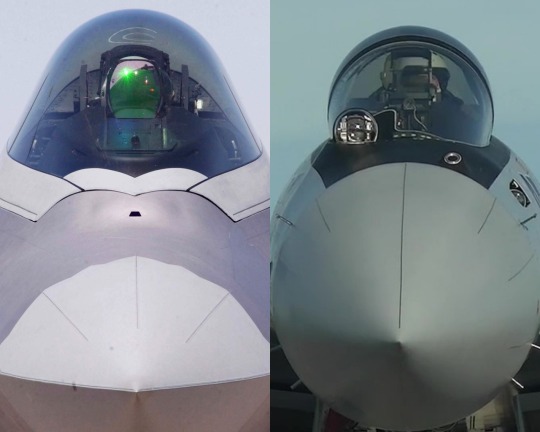
Does the absence of IRST leave the Raptor at a disadvantage compared to the Su-35?
Fernando Valduga By Fernando Valduga 01/31/2024 - 23:26in Military
Many military experts and former combat pilots often argue that the F-22 Raptor is currently considered unbeatable in relation to any other existing fighter, surpassing even the F-35 Lightning II in several aspects. But the Russian Su-35, even though it is not as powerful as the F-22 Raptor, it has an asset that could potentially challenge the supremacy of the Raptor.
Despite the impressive skills of the Lockheed Martin F-22 Raptor, there are still unanswered questions. Why does it lack essential features, such as the Infrared Search and Tracking (IRST) system and radars mounted on the sides? A need for expenditure containment by the U.S. Air Force, set at $9 million per aircraft in 1989, may have contributed to this omission.

During this period, an initial project incorporated advanced US$ 16 million in avionics per aircraft. However, the U.S. Air Force did not specify which systems to eliminate to meet budget restrictions. This crucial decision was largely left to the manufacturers. As a result, Lockheed Martin chose to renounce certain features, including the IRST and side radars mounted on the sides below the cockpit.
After almost 33 years, USAF said in 2022 that it aims to find an infrared search and tracking (IRST) system for the F-22. An IRST would have to be integrated with the other sensors of the F-22 - mainly its active electronic array radar (AESA) to provide a holistic view of the battle space.
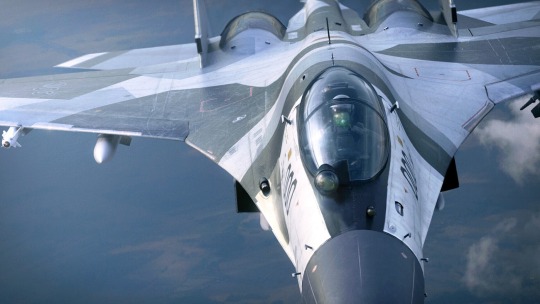
The strength of the fourth-generation Su-35 lies in its weapons control system by infrared search and tracking. This system includes a camera, target designator, laser rangefinder and an infrared sensor.
Although the fifth-generation F-22 and fourth-generation Su-35 seem equivalent in terms of capabilities, the Su-35 may have an advantage due to its air combat skills, its significantly lower price and its innovative IRST technology. These factors give the Russian fighter an advantage over its American equivalent.

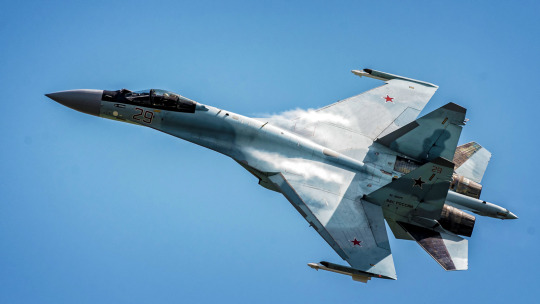
A study led by defense expert Alex Lockie points out that the Su-35s can actually have more advantages than the U.S. Raptors in direct combat or during interception missions. If an air combat occurs during an interception operation, it is believed that Russian fighters could have a significant advantage in detecting the supposedly "invisible" F-22 Raptor.
Expressing his professional opinion, Lieutenant Colonel David Berke, who has the rare experience of piloting both the F-22 and the F-35, suggested that if he were piloting the F-22, he would not opt for a maneuverable combat with an opponent. Instead, Berke would take advantage of the main force of the F-22 - its stealth capabilities - to avoid visual aerial battles.

Based on his knowledge of combat air power, expert Justin Bronk stated that aircraft models such as the F-22, characterized by their stealth design and internal weapon storage, may not be the preferred options for interception missions. Bronk pointed out that more cost-efficient jets can effectively play this role.
The Infrared Search and Tracking (IRST) system is used in fighters to detect and monitor objects that emit infrared radiation, such as other aircraft or missiles.
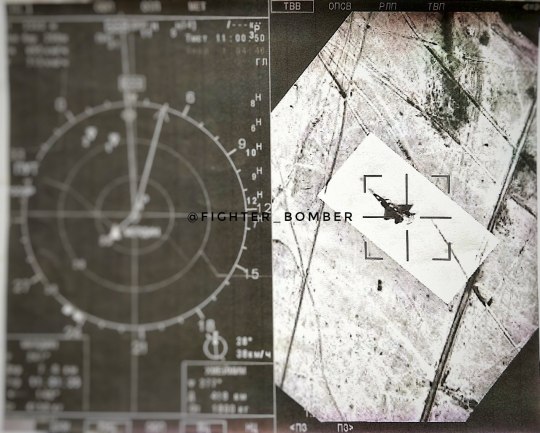
An F-22 seen by the Su-35's IRST sensor.
This technology operates as a passive sensor system, that is, it does not emit signals. Instead, it detects infrared radiation emitted by other objects. This is particularly advantageous in situations where the radar can fail, such as in stealth operations or environments with high electronic noise.
The last U.S. fighter to have an integrated IRST sensor during development was the F-14 Tomcat. The F/A-18 Super Hornet now has the option of carrying a central droptank with an IRST, which will make the combat launch expensive.
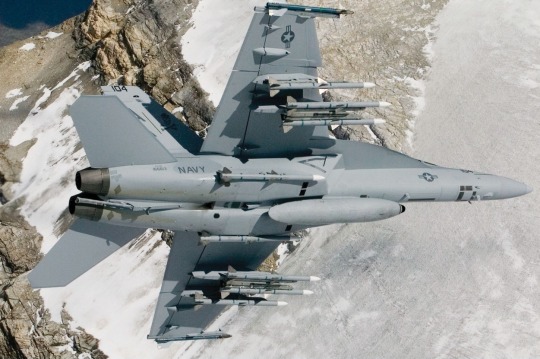
The IRST21 installed in the central tank of a Super Hornet.
The operation of an IRST system involves several steps. First, the system scans the environment for infrared radiation sources, usually using a rotating mirror that reflects the radiation received in an infrared detector. This detector converts infrared radiation into an electrical signal, which is processed by a computer to form an image.
Subsequently, the system analyzes this image to identify potential targets based on their distinct thermal signatures. This operational process can be performed several times per second, allowing the system to accurately track mobile targets.

An aircraft equipped with an IRST system has several advantages. First of all, because it is passive, this system does not reveal the location of the aircraft as the radar does, making it ideal for stealth operations.
Secondly, IRST systems can detect targets at long distances, even under conditions where the radar may prove ineffective, such as under heavy rain or through smoke. Thirdly, IRST systems can detect stealth aircraft, specifically designed to be undetectable by radar.

FAB F-39E Gripen fighter equipped with the IRST.
Finally, since IRST systems use thermal signatures to identify targets, they are less likely to be deceived by baits or other countermeasures that could potentially deceive radar systems.
Tags: Military AviationF-22 RaptorIRSTSu-35 Flanker
Sharing
tweet
Fernando Valduga
Fernando Valduga
Aviation photographer and pilot since 1992, he has participated in several events and air operations, such as Cruzex, AirVenture, Dayton Airshow and FIDAE. He has works published in specialized aviation magazines in Brazil and abroad. He uses Canon equipment during his photographic work in the world of aviation.
Related news
MILITARY
Taking advantage of the Red Flag, USAF performs the first "Bamboo Eagle" Exercise by adding multi-domain elements
31/01/2024 - 17:00
MILITARY
Russia's large stealth attack drone, Okhotnik, is expected to go into mass production in 2024
31/01/2024 - 16:00
Beta Technologies' Alia electric aircraft completed a three-month experimental deployment with the U.S. Air Force that included a simulated evacuation of victims at Moody Air Base, Georgia. (Photo: U.S. Air Force / Samuel King Jr.)
MILITARY
USAF: Electric aircraft Alia performs evacuation simulation of victims at a cost of only 5 dollars
31/01/2024 - 14:00
MILITARY
Ukraine claims to have shot down another Russian Su-34 combat jet
31/01/2024 - 11:30
MILITARY
Acquisition of F-35, A400M and helicopters are part of Germany's budget of 34.9 billion euros for 2024
31/01/2024 - 08:44
AERONAUTICAL ACCIDENTS
USAF F-16 accident in South Korea
30/01/2024 - 23:17
10 notes
·
View notes
Text
0 notes